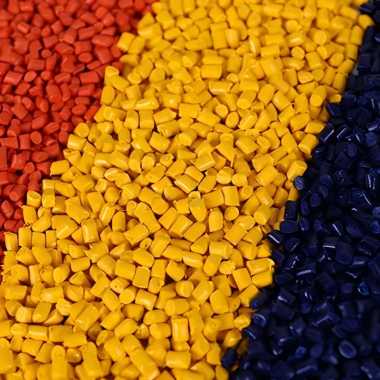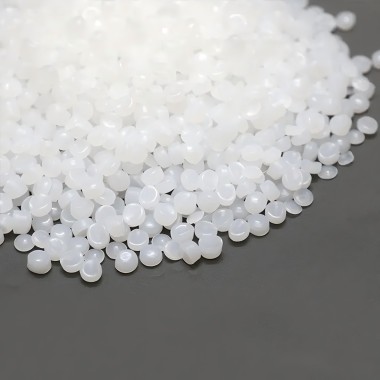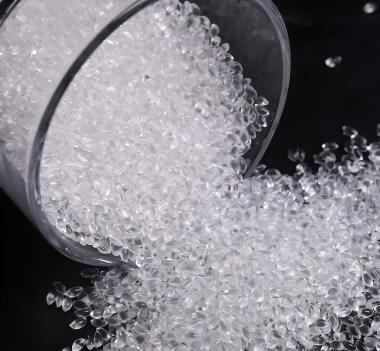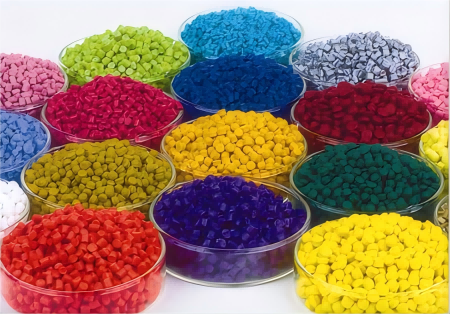The cable sheath (also known as the outer sheath or sheath) is the outermost layer of a cable, optical cable, or wire, as the most important barrier in the cable to protect the internal structural safety, protecting the cable from external heat, cold, wet, ultraviolet, ozone, or chemical and mechanical damage during and after installation. Cable sheathing is not meant to replace the reinforcement inside the cable, but they can also provide a fairly high level of limited protection. In addition, the cable sheath can also fix the shape and form of the stranded conductor, as well as the shielding layer (if present), thereby minimizing interference with the cable’s electromagnetic compatibility (EMC). This is important to ensure consistent transmission of power, signal, or data within the cable or wire. Sheathing also plays an important role in the durability of optical cables and wires.
There are many types of cable sheath materials, commonly used cable sheath materials are – crosslinked polyethylene (XLPE), polytetrafluoroethylene (PTFE), fluorinated ethylene propylene (FEP), perfluoroalkoxy resin (PFA), polyurethane (PUR), polyethylene (PE), thermoplastic elastomer (TPE) and polyvinyl chloride (PVC), They each have different performance characteristics.
The selection of raw materials for cable sheathing must first take into account the adaptability to the environment and the compatibility of the use of connectors. For example, extremely cold environments may require cable sheathing that remains flexible at very low temperatures. Choosing the right sheathing material is critical to determining the best optical cable for each application. Therefore, it is important to understand exactly what purpose the optical cable or wire must meet and what requirements it must meet.  Polyvinyl Chloride (PVC) is a commonly used material for cable sheathing. It is made of polyvinyl chloride based resin, adding stabilizer, plasticizer, inorganic fillers such as calcium carbonate, additives and lubricants, etc., through mixing and kneading and extrusion. It has good physical, mechanical and electrical properties, while having good weather resistance and chemical stability, it can also improve its performance by adding different additives, such as flame retardant, heat resistance and so on.
Polyvinyl Chloride (PVC) is a commonly used material for cable sheathing. It is made of polyvinyl chloride based resin, adding stabilizer, plasticizer, inorganic fillers such as calcium carbonate, additives and lubricants, etc., through mixing and kneading and extrusion. It has good physical, mechanical and electrical properties, while having good weather resistance and chemical stability, it can also improve its performance by adding different additives, such as flame retardant, heat resistance and so on.
The production method of PVC cable sheath is to add PVC particles to the extruder and extrude them under high temperature and pressure to form a tubular cable sheath.
The advantages of PVC cable jacket are cheap, easy to process and install, and a wide range of applications. It is often used in low-voltage cables, communication cables, construction wires and other fields. However, the high temperature resistance, cold resistance, UV resistance and other properties of PVC cable sheathing are relatively weak, containing harmful substances to the environment and human body, and there are many problems when applied to special environments. With the enhancement of people’s environmental awareness and the improvement of material performance requirements, higher requirements have been put forward for PVC materials. Therefore, in some special areas, such as aviation, aerospace, nuclear power and other fields, PVC cable sheathing is carefully used.  Polyethylene (PE) is a common cable sheath material. It has good mechanical properties and chemical stability, and has good heat resistance, cold resistance and weather resistance. PE cable sheath can be improved by adding additives, such as antioxidants, UV absorbers, etc.
Polyethylene (PE) is a common cable sheath material. It has good mechanical properties and chemical stability, and has good heat resistance, cold resistance and weather resistance. PE cable sheath can be improved by adding additives, such as antioxidants, UV absorbers, etc.
The production method of PE cable sheath is similar to that of PVC, and PE particles are added to the extruder and extruded under high temperature and pressure to form a tubular cable sheath.
PE cable sheath has the advantages of good environmental aging resistance and UV resistance, while the price is relatively low, widely used in optical cables, low voltage cables, communication cables, mining cables and other fields. Cross-linked Polyethylene (XLPE) is a cable sheath material with high electrical and mechanical properties. It is produced by cross-linking polyethylene materials at high temperatures. The crosslinking reaction can make the polyethylene material form a three-dimensional network structure, which makes it have high strength and high temperature resistance. XLPE cable sheathing is widely used in the field of high voltage cables, such as transmission lines, substations, etc. It has excellent electrical properties, mechanical strength and chemical stability, but also has excellent heat resistance and weather resistance.
Polyurethane (PUR) refers to a group of plastics developed in the late 1930s. It is produced by a chemical process called addition polymerization. The raw material is usually petroleum, but plant materials such as potatoes, corn or sugar beets can also be used in its production. PUR is a commonly used cable sheathing material. It is an elastomer material with excellent wear resistance, aging resistance, oil resistance and acid and alkali resistance, while having good mechanical strength and elastic recovery properties. The PUR cable sheath can be improved by adding different additives, such as flame retardants, high temperature resistant agents, etc.
The production method of PUR cable sheath is to add PUR particles to an extruder and extrude them under high temperature and pressure to form a tubular cable sheath. Polyurethane has particularly good mechanical properties.
The material has excellent wear resistance, cutting resistance and tear resistance, and remains highly flexible even at low temperatures. This makes PUR particularly suitable for applications that require dynamic motion and bending requirements, such as towing chains. In robotic applications, cables with PUR sheathing can withstand millions of bending cycles or strong torsional forces without problems. PUR also has strong resistance to oil, solvents and ultraviolet radiation. In addition, depending on the composition of the material, it is halogen-free and flame retardant, which are important criteria for cables that are UL certified and used in the United States. PUR cables are commonly used in machine and factory construction, industrial automation, and the automotive industry.
Although the PUR cable sheath has good physical, mechanical and chemical properties, its price is relatively high and it is not suitable for low-cost, mass-production occasions.  Polyurethane thermoplastic elastomer (TPU) is a commonly used cable sheathing material. Different from polyurethane elastomer (PUR), TPU is a thermoplastic material with good processability and plasticity.
Polyurethane thermoplastic elastomer (TPU) is a commonly used cable sheathing material. Different from polyurethane elastomer (PUR), TPU is a thermoplastic material with good processability and plasticity.
TPU cable sheath has good wear resistance, oil resistance, acid and alkali resistance and weather resistance, and has good mechanical strength and elastic recovery performance, which can adapt to complex mechanical movement and vibration environment.
The TPU cable sheath is made by adding TPU particles to an extruder and extruding them under high temperature and pressure to form a tubular cable sheath.
TPU cable sheathing is widely used in industrial automation, machine tool equipment, motion control systems, robots and other fields, as well as automobiles, ships and other fields. It has good wear resistance and elastic recovery performance, can effectively protect the cable, but also has excellent high temperature resistance and low temperature resistance.
Compared with PUR, TPU cable sheathing has the advantage of good processing performance and plasticity, which can adapt to more cable size and shape requirements. However, the price of TPU cable sheathing is relatively high, and it is not suitable for low-cost, mass-production occasions.
Silicone rubber (PU) is a commonly used cable sheathing material. It is an organic polymer material, which refers to the main chain composed of silicon and oxygen atoms alternately, and the silicon atom is usually connected with two organic groups of rubber. Ordinary silicone rubber is mainly composed of silicone chains containing methyl groups and a small amount of vinyl. The introduction of phenyl group can improve the high and low temperature resistance of silicone rubber, and the introduction of trifluoropropyl and cyanide group can improve the temperature resistance and oil resistance of silicone rubber. PU has good high temperature resistance, cold resistance and oxidation resistance, and also has good softness and elastic recovery properties. Silicone rubber cable sheath can improve its performance by adding different additives, such as wear-resistant agents, oil resistant agents, etc.
The production method of silicone rubber cable sheath is to add the silicone rubber mixture to the extruder and extrude it under high temperature and pressure to form a tubular cable sheath. Silicone rubber cable sheath is widely used in high temperature and high pressure, weather resistance requirements, such as aerospace, nuclear power plants, petrochemical, military and other fields.
It has good high temperature resistance and oxidation resistance, can work stably in high temperature, high pressure, strong corrosion environment, but also has good mechanical strength and elastic recovery performance, can adapt to complex mechanical movement and vibration environment.
Compared with other cable sheathing materials, silicone rubber cable sheathing has higher temperature resistance and oxidation resistance, but also has good softness and elastic recovery performance, suitable for more complex working environments. However, the price of silicone rubber cable sheath is relatively high, and it is not suitable for low-cost, mass production occasions.  Polytetrafluoroethylene (PTFE) is a commonly used cable sheathing material, also known as polytetrafluoroethylene. It is a polymer material with excellent corrosion resistance, high temperature resistance and chemical resistance, and can work stably in extreme high temperature, high pressure and strong corrosion environments. In addition, fluorine plastics also have good flame retardant properties and wear resistance.
Polytetrafluoroethylene (PTFE) is a commonly used cable sheathing material, also known as polytetrafluoroethylene. It is a polymer material with excellent corrosion resistance, high temperature resistance and chemical resistance, and can work stably in extreme high temperature, high pressure and strong corrosion environments. In addition, fluorine plastics also have good flame retardant properties and wear resistance.
The production method of fluorine plastic cable sheath is to add fluorine plastic particles to the extruder and extrude them under high temperature and pressure to form a tubular cable sheath.
Fluorine plastic cable sheath is widely used in aerospace, nuclear power plants, petrochemical and other high-end fields, as well as semiconductors, optical communications and other fields. It has excellent corrosion resistance and high temperature resistance, can work stably in high temperature, high pressure, strong corrosion environment for a long time, but also has good mechanical strength and elastic recovery performance, can adapt to complex mechanical movement and vibration environment.
Compared with other cable sheath materials, fluorine plastic cable sheath has higher corrosion resistance and high temperature resistance, suitable for more extreme working environments. However, the price of fluorine plastic cable sheath is relatively high, and it is not suitable for low-cost, mass production occasions.
Post time: Oct-14-2024

